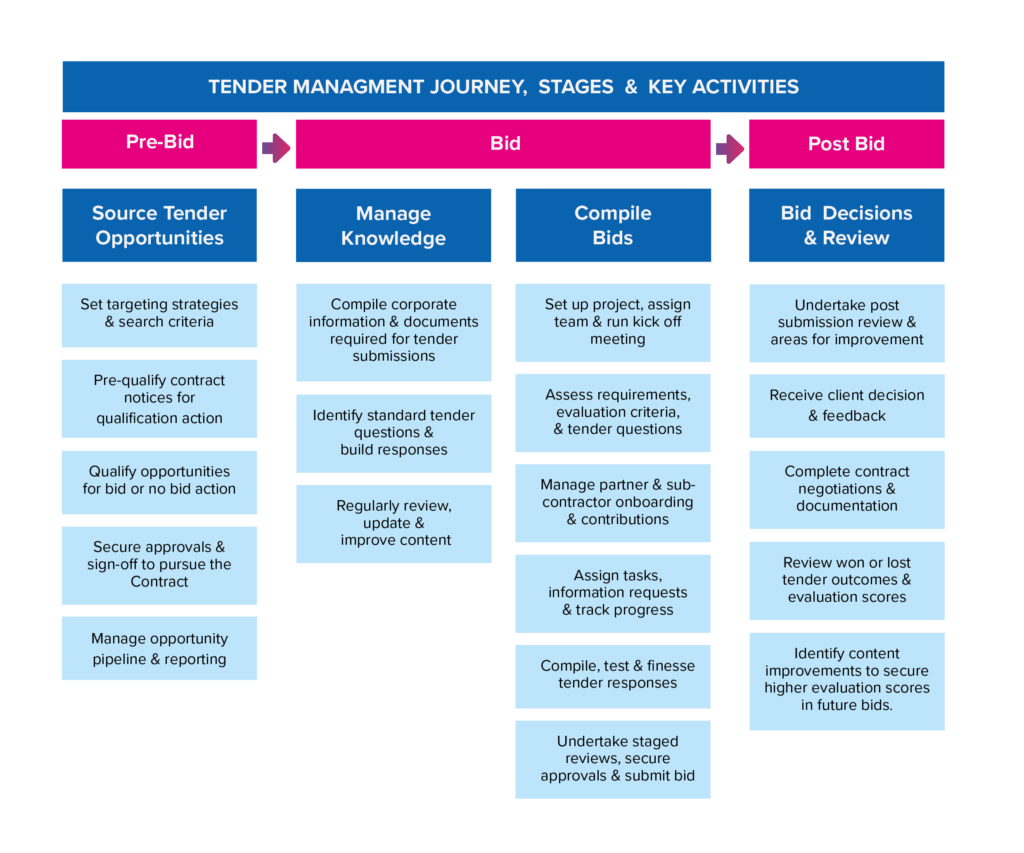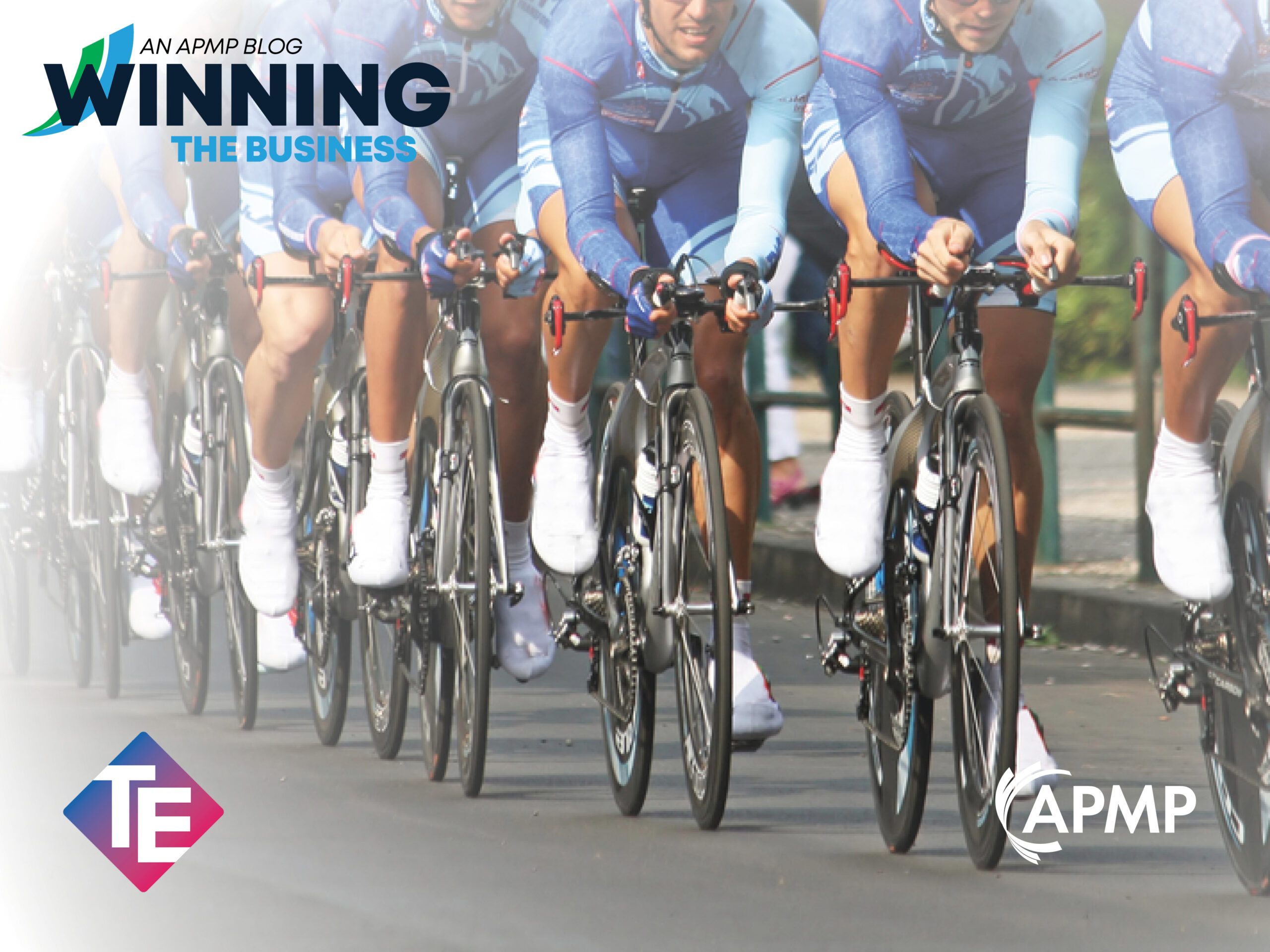With tender deadlines looming, every hour counts! Valuable time can be easily lost with your team completing numerous manual, repetitive tasks. A time that could be better spent finessing your proposal or tender and can secure higher evaluation scores and win more business!
So, what’s the answer? Let’s explore the challenges and solutions for alleviating these task-related frustrations and time wasters.
In our last article, elite sports inspired us to develop a motivated, strong team to deliver winning bids. This month, we again turn to elite sports for further inspiration.
It’s all in Marginal Gains
In 2003, British Cycling, the governing body for British professional cycling, hired Dave Brailsford as its new performance director. His (and his team’s) relentless commitment to a strategy referred to as “the aggregation of marginal gains” completely changed the face of British professional cycling.
This required looking at every element involved in pro-cycling and improving each by 1 percent. When added together, the total improvement would prove hugely significant. What made British Cycling stand out from other teams was the extent to which this approach was applied.
Yes, the usual and expected elements were examined and improved, such as components of the bikes and gear worn by the cyclists, training regimes and aerodynamics, etc. But new and unexpected areas were also improved, such as
- Precision over food preparation.
- Mattresses and pillows to achieve ultimate sleep.
- The gels used for muscle recovery.
- A surgeon taught the team to handwash correctly and reduce illness.
- Maintenance truck floors painted white to spot dust, which hampers bike performance.
Within five years, British cyclists were dominating road and track cycling events. They won 7 out of the ten available gold medals in track cycling at the 2008 Beijing Olympics and did the same four years later at the London Olympics and four consecutive Tour De France wins.
Applying Marginal Gains to Bid Management
Of course, we do not suggest you go to the lengths British Cycling took! However, we can apply the principles of marginal gains by breaking down the process and improving individual elements and bid management activities.
The first step is ensuring your existing process is well-defined and mapped out. In its simplest form, your process may look like the diagram below.
Generating detailed process diagrams for each stage of the bid journey will provide a visual understanding of the complexities involved and help you identify where marginal gains and improvements can be secured.

You will need to consider the following when creating your process maps:
- People: Who does what – their roles, responsibilities and tasks?
- Environment: Where do they work – at home or in an office, in different regions, countries or time zones?
- Tasks: Individual tasks, repetitive tasks, workflows, etc.
- Technology: The platforms and tools used – a fully integrated solution or disparate generic business tools that result in working inefficiencies.
- Content Management: How you store, create, access, use, review, update, approve and improve your tender documentation, information and tender responses.
- Schedule: Time required to undertake tasks plus common roadblocks and delays.
Other factors to consider as part of your improvement plan will be your leadership, bid strategies, company culture and extent of team communications and collaboration. All the things we discussed in our last article – ‘There is No I’ in Bid Team!
Maximizing Marginal Gains
Once you have mapped your detailed workflows and tasks, you can better identify areas for improvement.
The three most common problems encountered throughout the bid journey are managing complex tasks, finding information, and generating content.
Addressing these significant challenges and the inefficiencies around repetitive, manual tasks will help you achieve your 1 percent improvement gains throughout the bid journey.
This may include refining your processes, improving collaboration and data management practices, as well as reviewing your support tools and applications.
All three problems can be significantly improved by implementing a dedicated Bid Management solution incorporating AI and machine learning. This will give you the following enhanced functionality, saving valuable time and resources:
- Automated Workflows: Manual setup is time-consuming, with many tasks to activate and complete. Critical activities may be missed, delayed or left incomplete. Automation increases working efficiency and ensures consistent activity is achieved. Workflows may include triggers, actions, conditions, prompts, schedules, and times to run. Example workflows include:
- Simple Automation: Sending an email notification to team members when a new tender project starts or an information request when a new tender question needs a response from a Subject Matter Expert.
- Complex Automation: Adding team members to a new tender project dependent on the type or value of the project (using IF statements) and inviting them to a briefing meeting.
- Sophisticated Search & Return: Searching for content can be frustrating and time-consuming. Inaccurate, out-of-date information and documentation may find its way into your tender submissions. Both putting your business at risk and securing low evaluation scores. Content stored within a central Bid Library and tender project workspaces will allow all stakeholders easier access to quality content. In addition, more sophisticated AI search functionality will help deliver more targeted, intentional and accurate content returns.
- Auto-Population of Content: One of the most demanding tasks in bid management is the manual ‘cut and paste’ of content. This is a repetitive requirement, whether extracting tender questions from Procurement Agency documentation to action information requests or compiling tender response and final bid submission. Adopting a Bid Management solution that fully integrates with Microsoft 365 Apps provides direct access to content, which can auto-populate content within either application with one click of the mouse.
Improvement Considerations
With our bid journey mapped out and considering the above potential functionality improvements, let’s delve deeper into each stage of the process and consider areas for improvement.
PRE-BID STAGE
Sourcing Tender Opportunities
With 1000s of Contract Notices published every week, sourcing and qualifying tender opportunities is a time-consuming, repetitive process. Valuable hours and days can easily be wasted in this initial stage, severely impacting the time to finesse your tender responses.
You’ll need to ensure your best-fit opportunities are effectively qualified and prioritized for pursuit action. Thus giving you the best chance of submitting compelling, competitive bids with increased win probabilities.
Areas for improvement:
- Method of receiving Contract Notice Alerts (e.g., from Tender Portals, via 3rd party services or directly into your Bid Management Solution).
- Refining search criteria (procurement codes and keywords) to better target best-matched opportunities.
- Criteria and method for reviewing Contract Notices and assigning Sales Team members for qualification.
- Sales process, qualification criteria and benchmarking for consistent pursuit decisions.
- Access to Procurement Agency documentation and capture of sales information (key facts, risks, win themes, etc.) and qualification decisions.
- Assignment, notification and action by Approvers.
- Access to opportunity progress, team performance and contract renewals for forecasting and early action.
BID STAGE
Managing Knowledge
With vast amounts of information and documentation to manage throughout the bid process, sourcing content can be a frustrating and challenging activity. Ensuring easy access to content stored centrally within a database, library or tender project is vital. Delays in searching and finding content from multiple data silos, teams and platforms can result in rushed creation or reuse of tender responses that may be outdated, inaccurate or receive low evaluation scores.
Improvements need to ensure all content is easy to capture, store, create, access, review and update, giving your content contributors and users the confidence and tools to generate and submit quality tenders with higher win probabilities.
Areas for improvement:
- Central storage of corporate documents and information.
- Access and tools for content contributors, approvers and bid compilers.
- Ease of navigation, search and return of content.
- Actioning information requests, reminders and task completions.
- Visibility to content ownership, updates, review, approvals and expiry dates.
- Tools to review, give feedback, collaborate and improve content.
Compiling Bids
The most critical stage of the bid process. And one that involves numerous people and complex tasks. Tender teams must be mobilized as soon as pursuit decisions are made. Delays in team and task assignments can waste valuable time better spent compiling responses.
Improvements must streamline processes and activities and improve collaboration and task completion. Aim to carve out time for your Subject Matter Experts and Bid Teams to compile convincing bid submissions.
Areas for improvement:
- Project set up, team assignment and notification.
- Migration of all Procurement Agency documentation and sales insight to tender project.
- Ease of access and updating of tender project content and activity.
- Method of capturing and summarizing Procurement Agency requirements, scoring methodology, key facts, risks, and competitor intelligence.
- Method and ease of selecting and onboarding partners and subcontractors and capturing communications, agreements, and response contributions.
- Ease of setting tasks, sending information requests, reminders and recording completed activities.
- Ease of generating, editing, reviewing, and providing feedback on content.
- Visibility to resources, schedules, deadlines and project progress for agile project management and issue resolution.
- Implementation of staged reviews and securing approvals.
POST BID
Bid Decisions & Review
One of the riskiest stages is winning the tender, negotiating the contract, and handing over the project to the delivery team. With proper handover of approved documentation and information, the delivery team can get the project started.
Equally important is to take time after your bid submission to review your performance and the outcomes of the tender, whether that’s a win or a loss. It’s crucial to learn from these activities. Repeating working inefficiencies and reusing low-scoring responses is not sustainable for long-term success.
Improvements must focus on achieving a robust handover of contracts won with the delivery team and in-depth performance and results reviews. Ensuring there are opportunities for stakeholders to provide feedback, innovate and learn will help deliver ongoing marginal gains and improvements!
Areas for improvement:
- Ease of tender project performance analysis to identify working inefficiencies, roadblocks and delays.
- Method for capturing tender results and contract negotiations.
- Seamless handover of all tender documentation and information for rapid delivery mobilization.
- Method to capture Procurement Agency evaluation scores and feedback to identify gaps in response quality.
- Environment to share feedback, ideas, review results and learn from them.
Conclusion
Being in such a high-pressure, competitive environment leaves little time to take stock, review and improve your bid management activities and outcomes.
Hopefully, the concept of Marginal Gains, proven by British Cycling to be such a game-changer, will inspire you to take action!
Every 1 percent improvement you secure will give you more time to finesse tender responses, secure higher evaluation scores and win more business.
About the Author
TenderEyes Software is a leading supplier of Enterprise Bid Management Software.
Providing powerful intuitive tools, workflow automation and in-built best practices within one dedicated solution. And empowering global Bid Teams in their pursuit of world-class tender wins!
To learn more about achieving world-class Bid Management best practices, visit www.tendereyessoftware.com



Join the Conversation